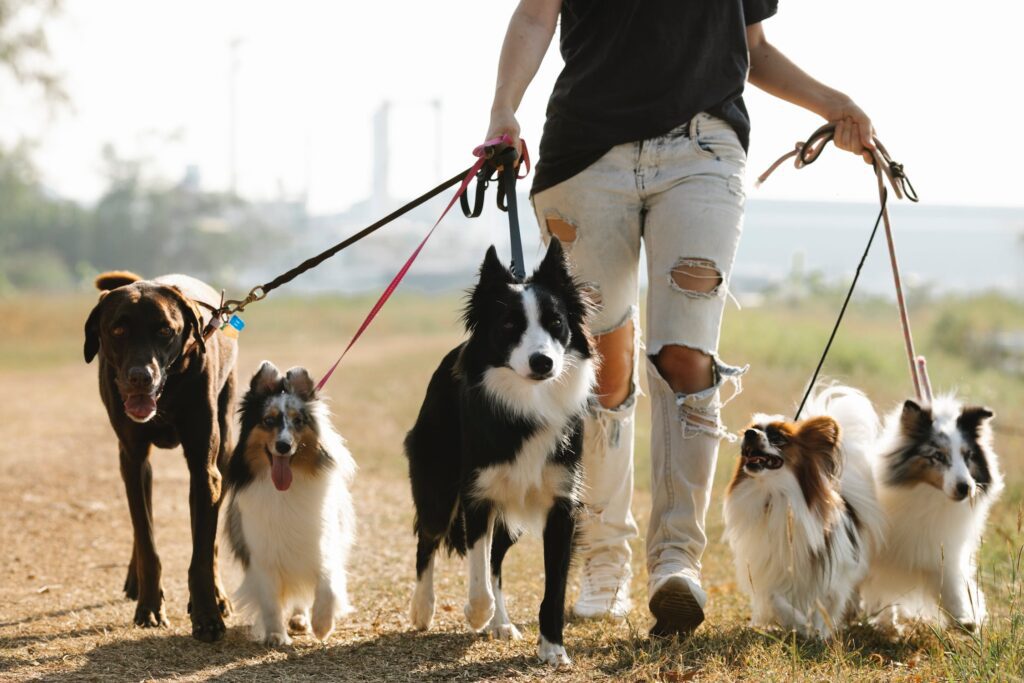Imagine your loyal companion having trouble keeping up on walks or feeling uncomfortable when attempting to wake up from a nap. For dogs with hip dysplasia, a common orthopedic illness that can have a major impact on their quality of life, this situation is all too true.
So, why should pet parents be concerned about hip dysplasia, and what does it actually mean? This contains all the information you need to understand canine hip dysplasia, from symptoms and signs to care and treatments.
Understanding Hip Dysplasia
When a dog’s hip joint develops improperly, the joint surfaces undergo exceptional wear and tear, a condition known as dysplasia, which translates to “abnormality of development.” Your dog may experience discomfort and swelling as a result of this inflammation.
It can affect dogs of any breed and size, as well as cats. Large breed dogs, such as Labrador retrievers, German Shepherds, Rottweilers, and Saint Bernards, are usually affected.
Causes of Hip Dysplasia
The most significant risk factor for Canine Hip Dysplasia (CHD) is hereditary or genetic. Development of CHD might be complicated by rapid weight gain and growth due to overnutrition. In line with this, canine pals who are obese have highly stressed joints, which can either create or worsen hip dysplasia.
There are puppies that require food designed specifically for large-breed puppies due to specific nutritional needs. Food high in growth inhibitors can help prevent abnormal growth, which can cause elbow dysplasia, hip dysplasia, and other joint issues in addition to skeletal disorders. By reducing their growth, breeders can help avoid future joint problems by allowing their joints to develop without excessive strain.
Furthermore, early spaying or neutering may raise the risk of hip dysplasia in certain dogs, according to research.
Signs and Symptoms of Hip Dysplasia
Hip dysplasia usually appears in dogs between the ages of six and twelve months. This is due to the fact that a puppy’s hip joint is still developing, even though the problem is genetic and is inherited from parents.
Among the many signs and symptoms of hip dysplasia are the following:
- Decreased activity
- Reduction in range of motion
- Reluctance or difficulty getting up, jumping, jogging, or climbing stairs
- Bunny hopping or swaying gait
- Joint grating when moving
- Stiffness or limping
- Pain
- Loss of thigh muscle mass
When the disease is mild, some dogs may not exhibit symptoms until they are extremely older and have hip arthritis.
Diagnosis of Hip Dysplasia
Physical examination and diagnostic imaging are commonly used in the diagnosis of hip dysplasia in dogs. A veterinarian will watch the dog’s gait, range of motion, and general mobility during a clinical examination. Hip and joint palpation can also be used to check for pain, instability, or discomfort.
A complete blood count can reveal inflammation from joint illness, therefore your dog’s clinical examination may involve blood work. A history of your dog’s health and symptoms, any occurrences or injuries that may have led to these symptoms, and any knowledge you may have regarding your dog’s breed will also be required by your veterinarian.
The gold standard for evaluating and measuring joint alterations linked to CHD joint remodeling is currently radiography or Xrays.To assess the extent of hip dysplasia in your fur buddy, your veterinarian will take radiographs of the dog’s hips. These will assist in deciding on your dog’s most appropriate management.
Early identification of hip dysplasia improves the prognosis for affected dogs by delaying the condition’s progression, lowering the risk of related consequences, and enabling the rapid beginning of suitable therapy.
Management of Hip Dysplasia
A combination of lifestyle changes, medication, and, in certain situations, surgery can be used to treat hip dysplasia in dogs.
First and foremost, the best ways to treat hip dysplasia in dogs are through proper diet and weight management. So that preventive action may be performed, tracking the development of hip dysplasia is crucial. Large and fast-growing breeds need to have a low-impact training regimen to build stronger muscles surrounding their joints and a balanced diet to avoid joint degradation. Based on your pet’s age, breed, and level of hip dysplasia, the veterinarian will prescribe a weight management and exercise regimen. Physical therapy has been proven to enhance both quality of life and muscle strength.
NSAIDS, or non-steroidal anti-inflammatory medicines, can be given, which help in decreasing inflammation and relieving pain. However, it is important to note that long-term use is not advised, and while taking these drugs, liver function should be checked every six to twelve months. Supplements containing glucosamine and chondroitin are safe and can help patients with osteoarthritis maintain their joints. They provide the building blocks for the production of cartilage in joints and block enzymes that cause damage. It could take up to six weeks for supplements to start working. If your dog’s hip dysplasia is causing them pain or discomfort, they might need to take occasional naps and rest. It is critical to make sure your dog doesn’t over exercise. Your canine buddy must stay away from long-term exercise, skidding, chasing, jumping, and racing!
In severe cases, if your fur baby doesn’t get better and is still in discomfort, your veterinarian might decide to operate. The goals of surgical treatments such as total hip replacement (THR), pelvic osteotomy, and femoral head ostectomy (FHO) are to increase joint function, lessen pain, and improve the quality of life for dogs.
The long-term management of hip dysplasia requires routine follow-up care and veterinary supervision to evaluate the dog’s reaction to treatment, make any required modifications, and offer continuing assistance to maximize the dog’s comfort and mobility.












